With present day consumer choice sat at astronomically high levels, people have more purchase options available to them now than ever before.
This is particularly evident when it comes to soccer balls, as prospective buyers are bombarded with all sorts of colour, size and style solutions that are readily available.
But one aspect of the sports accessory industry that has largely remained the same over all these years is product packaging.
Think about this for a second…
When was the last time you saw a soccer ball fitted neatly within a unique-looking case?
My bet is that you’ve only seen one that fits the aforementioned criteria on a single occasion, or even never at all!
And that’s not a bad thing in itself, as soccer ball packaging has largely been standardised across the entire global supply chain in order to maximise cost efficiency and streamline mass production.
So that brings me on to the question that today’s topic is centred around – how soccer balls are packaged.
Here’s the answer…
Soccer balls are typically packed within a corrugated fibre board casing whilst fully inflated, or they are delivered to the customer in a de-pressurised state, wrapped in a form of low-density polyethylene plastic.

Want to test your knowledge on soccer ball care?
Take the quiz by clicking the button below and see just how informed you truly are!
Note - You'll need to enter your email address to see the final results.
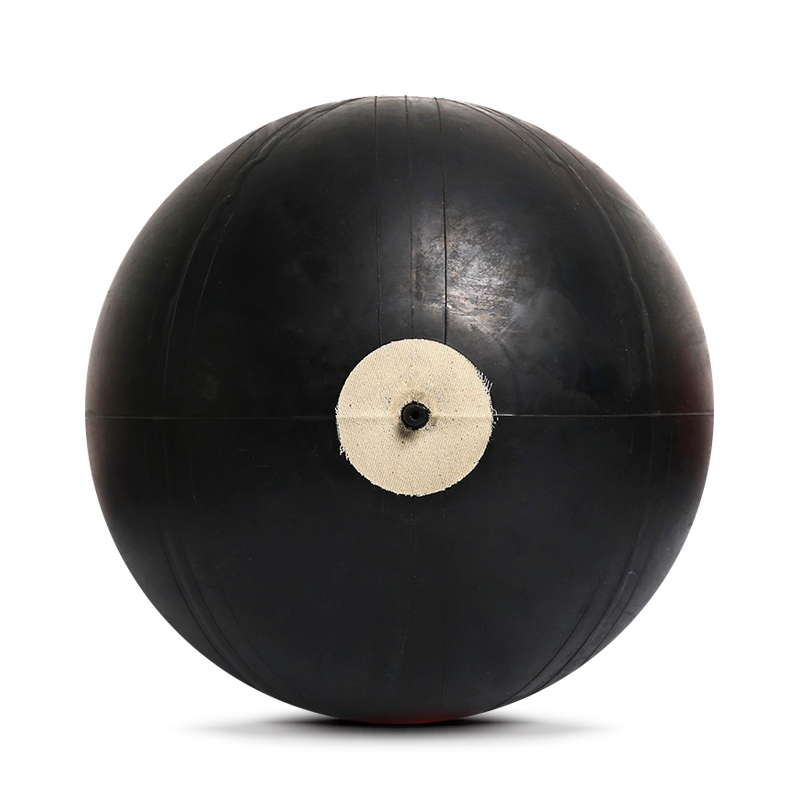
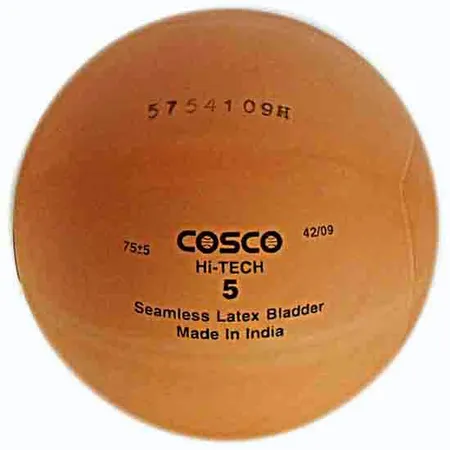

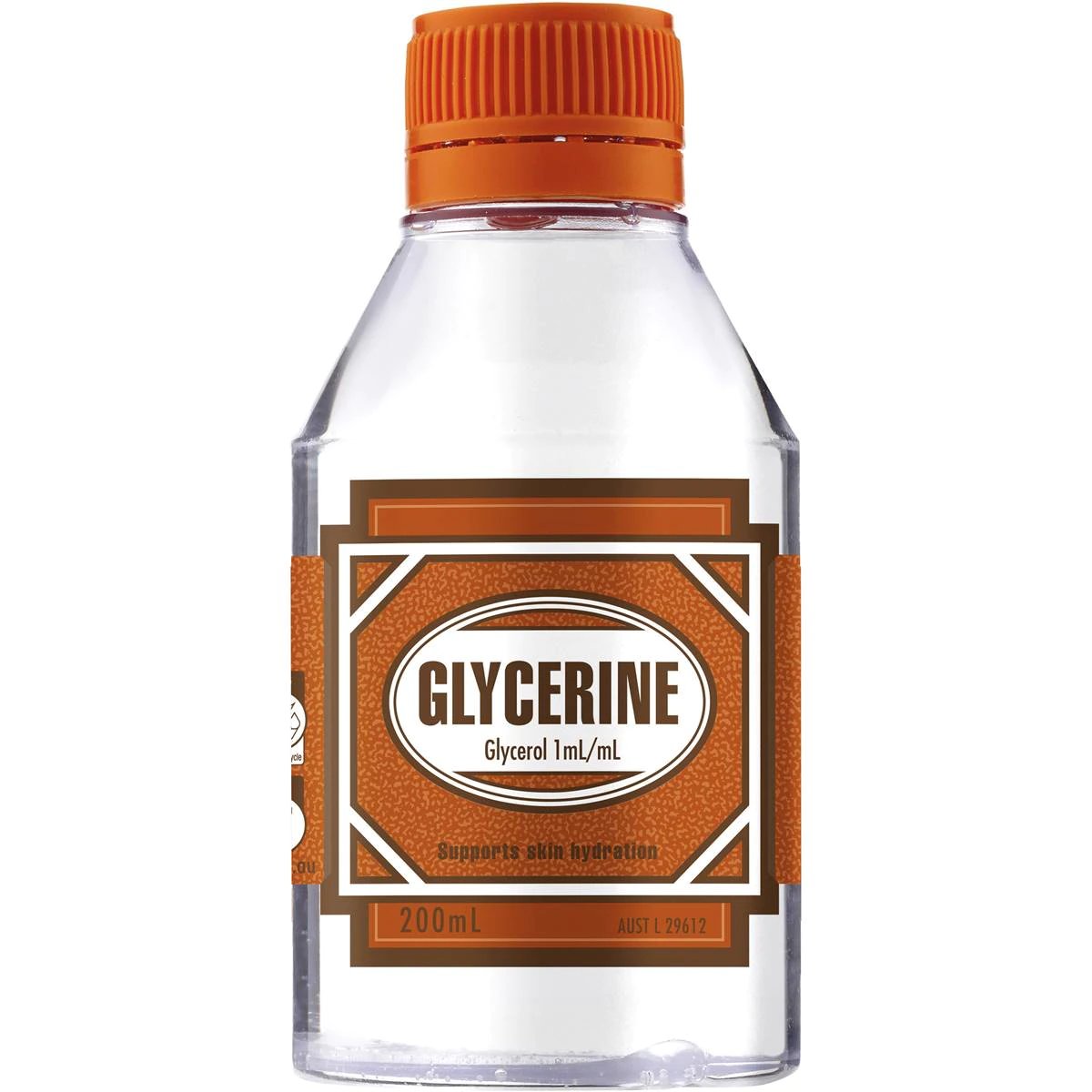
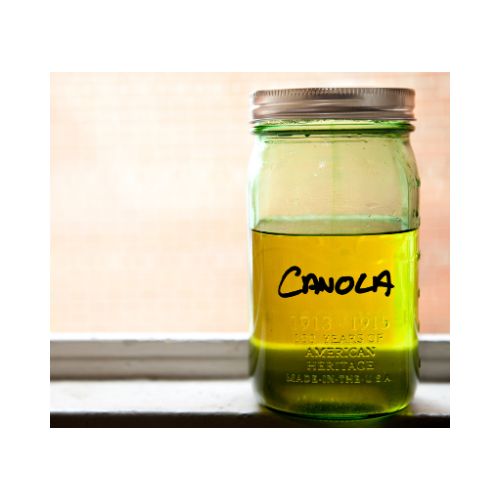



















Let’s investigate this further.
Which soccer ball packaging methods are used today?
From my own extensive research and first-hand experience with soccer balls, I’ve identified the most common package types that you’re likely to come across when you buy a soccer ball for yourself – be it inside a physical retail store or online.
Read on to find out what they are.
1. Corrugated fibreboard

The first type – which you’ll generally come across at high-street stores – is corrugated fibreboard packaging.
Also referred to as a corrugated paper box, this is a multi-layered material made from three layers of kraft paperboard.
The outer layers are linerboards that make up for the bulk of the box, whilst the layer in between the others is a piece of fluting that helps create air pockets.
Don’t worry if you haven’t got even the slightest idea of what fluting is, as I’m now going to explain what it is and how it functions.
I’ll start with a simple diagram:

Fluting is essentially an architectural design that uses curves within the confines of a given space to strengthen the structural integrity of corrugated fibreboard, which helps the material resist bending and pressure from all directions.
The fluting is glued onto the paperboard to enhance the material’s strength and durability.
More so, there are different types of fluting for different purposes, ranging from 33 flutes per foot to 125 flutes per foot.
Although corrugated fibreboard falls under the same family as cardboard, the latter is broadly defined as any heavy paperboard, regardless of whether that paperboard is corrugated or not.
This material has many advantages that make it easy to see why it’s an ideal fit for soccer ball packaging, including:
- Being easy to print on and customize using die cuts
- Their excellent resistance to strong impacts and rough handling during product shipping processes
- Suitability for stacking and palletization due to their ability to comfortably support the weight of other boxes placed on top of them
- An infinite number of shape customization possibilities
- Cost-effectiveness due to lower raw material costs and its mass production capability supports minimal labour and technological infrastructure costs
- Fantastic recyclability and renewability
So, companies that wish to ship fully inflated soccer balls tend to use corrugated fibreboard, particularly because of the wide array of benefits that this material offers over traditional cardboard.
2. Low-density polyethylene plastic
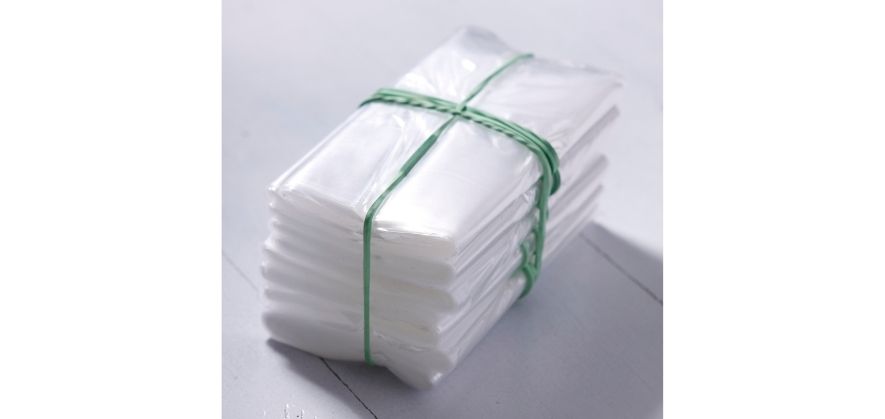
The second type of packaging is a form of plastic known as low-density polyethylene.
You’ll generally find that soccer balls which have been shipped in a deflated state will be wrapped in low-density polyethylene as a way of securing them for the customer.
I’m sure you’re probably familiar with it in some shape or form, as it’s a type of plastic bag that is sometimes used as part of the packaging for electronic cables and other sorts of wiring accessories.
In addition, most bags of this material will either have the initials LDPE or PE-LD printed onto them.
This type of plastic is said to have the simplest chemical polymer structure, which makes it easy and cheap to manufacture.
It is also good enough for recycling, because it falls under the level 4 classification of the recycling scale made by the Society of the Plastics Industry (SPI) in 1988.
What this means is that you can easily dispose of it after you’ve unpacked your soccer ball by simply throwing it away in your trash can.
How Nike’s soccer ball packaging process works
I’m going to outline the two-step assembly process that one of the biggest global sports brands uses to pack its range of soccer balls.
We can definitely learn a thing or two from Nike, as they are one of the companies that sets the standards for the quality of consumer goods in this industry.
Now, let’s dig into the good stuff!
Using a proprietary “Prizm” design, the company has managed to enhance corrugated fibreboard packaging with the help of a firm called OAI Global that’s based in Portland, Oregon.
Here’s what the customer gets to see after the box is sealed:
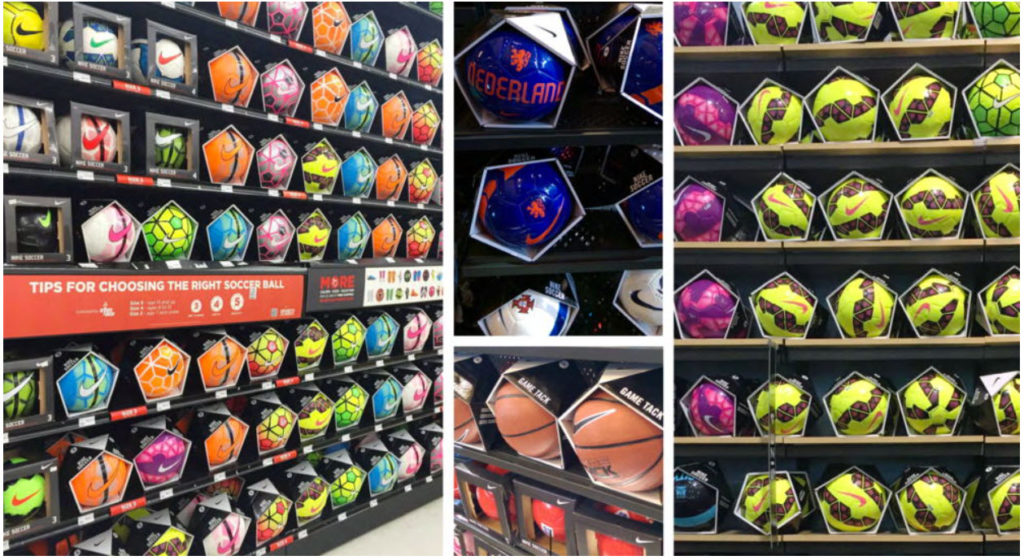
What happens is that the soccer ball is placed within the Prizm boxing after the packaging has been erected.
The structure then neatly wraps around the ball after it has been staged.
You can take a look at this step-by-step sequence through the image below:
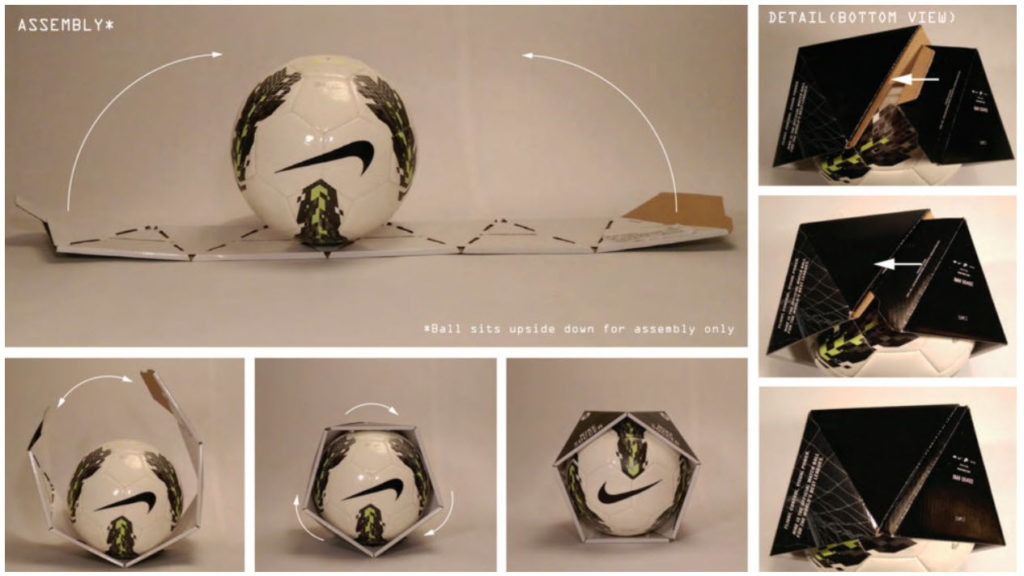
Because of the self-locking features available, the ball is closed inside the design using full- or half-panel tucks, which ultimately brings about a much smaller shipping footprint due to the fact that there’s less bits and bobs to deal with.
Furthermore, the presence of lock tabs means that glue is not needed to solidify the packaging structure, and that leads to even less material wastage.
Why do soccer balls need to be well packaged?
There are a number of reasons why packaging plays an important role in the overall quality of a finished product.
But for the sake of keeping this article brief, I won’t delve into that.
For soccer balls, packaging is primarily needed to secure the product from potential damage.
Just imagine pumping up your soccer ball to the correct pressure, only to find that it slowly deflates because of a piercing to the outer cover that occurred before its arrival at your doorstep.
You’d be left fuming, not only at the company that manufactured the soccer ball, but also the party that shipped it to you as well!
Any punctures that may be caused by rough handling from the fulfilment centre to the final destination are largely mitigated by the use of corrugated fibreboard or LDPE plastic as packaging.
What should you do in case a soccer ball is poorly packaged?
Sometimes you might be unfortunate enough to receive a damaged soccer ball that fell apart on its way to your doorstep because of the substandard way in which it was packaged.
In such a scenario, your best bet would be to get in touch with the company that sent the soccer ball to you; asking them to issue you with a full refund for your purchase.
Alternatively, you could request a like-for-like product exchange.
Most companies will have no qualms about giving their customers a replacement if the situation absolutely calls for it.
Final summary
That brings me to the end of this article on how soccer balls are packaged.
For those of you who only had the time to skim through the piece, I’ll end with a simple too long didn’t read (TL; DR) excerpt…
Soccer balls are packaged using either a corrugated fibreboard casing or a low-density polyethylene plastic bag, with the former material used for pre-inflated balls and the latter used for those shipped in a deflated state.
Finally, before you go, you should check out our eBook on Soccer Ball Care.
Within this monster of a resource, we tackle all there is to know about looking after a soccer ball and maximising its useful life right from when you purchase this type of product.
This eBook covers a plethora of different topics, such as:
- soccer ball construction;
- inflation and pressure management;
- cleaning and maintenance;
- soccer ball storage; and
- how to extend the useful life of your ball
In just a couple of hours, you’ll have more knowledge on what is good and bad for your soccer ball than you could ever fathom!
You’ll learn how to inflate your soccer ball to the correct level of air pressure based on the size of ball you have, as well as know how to clean and store your soccer ball properly after games.
But I don’t think there’s anything better than being able to effectively troubleshoot problems with your soccer ball and fix them yourself!
So, you can finally take care of your soccer ball for many months to come, which without a doubt will save you time and money as won’t be searching for and buying a replacement any time soon.
With just one click…
Grab yourself a copy right now for only $29!
If you enjoy the content that I create and would like to buy me a coffee, then I’d really appreciate it!
Any money that I earn through this donation will be re-invested into more content for this website.
Additionally, by sending in a donation you’ll also receive a copy of my recently released 190+ page eBook on Soccer Ball Care, as well as be subscribed to our mailing list where you’ll be regularly informed on the latest developments concerning the Soccer Whizz blog.
- Future Icons: Europe’s Emerging Midfield Maestros Set for Glory - December 4, 2023
- Kickstarting a Revolution: How Soccer Transformed the United States Over the Last Four Years - October 7, 2023
- 4-1-4-1 Soccer Formation [Analysis] - September 23, 2023


